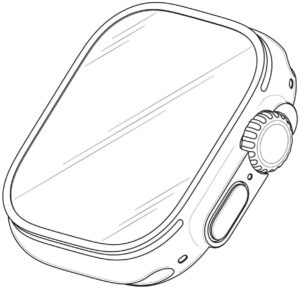Design rights stronger than ever
What is a registered design?
Design registrations protect the appearance of products. They work by protecting the shape, configuration, pattern and/or ornamentation of an article. A person infringes a registered design if they make, import or sell a product that embodies a design that is identical to, or substantially similar in overall impression to, the registered design.
The below image is from a design right associated with a popular smartwatch you will recognise:

While design protection is not as popular as patent protection, design filings have been on the rise with around 8400 filings in the last twelve months.
However, many Australian businesses still are not aware of the power of design rights, let alone that they are often easier, quicker and more cost-effective to obtain than patents. Design rights can also be easier and cheaper to enforce against infringers than patent rights.
The Australian Designs Office in 2023
We have had two decisions from IP Australia considering the standard of distinctiveness required for a valid design registration. In both cases, it was confirmed that the designs in question were new and distinctive and therefore valid.
In Wynnes Patent and Trade Marks Attorneys Pty Ltd v Wamlez Pty Ltd [2023] ADO3, IP Australia considered whether a Driver Bit for a Fastener was new and distinctive in light of prior art presented.
Although questions were raised around similar driver bits tested and sold earlier, it could not be established that there were any earlier public disclosures of the design.
The Hearing Officer noted that the prior art base was highly developed so small differences in visual features were likely to be significant. The Hearing Officer also opined and that the informed user would likely closely examine the profile of the end portion of such fastener products.
Evidence, in the form of images, was presented of earlier products having identical or near identical side views, though the Hearing Officer considered that information missing from the views was likely to be significant and determinative.
On comparing the design in question to the prior art, even after giving weight to existing similarities, the Hearing Officer could not conclude that the design was substantially similar in overall impression to the prior art. The design therefore remained certified despite evidence of similar products in the prior art base.
In FCA US LLC [2023] ADO 1, IP Australia concluded that a design for a new version of the iconic Jeep Wrangler by Fiat Chrysler Automobiles (FCA) was distinctive.
Previously, during examination, IP Australia had objected to the FCA design on the basis of visual similarities between the FCA design and an earlier image found on a popular Jeep forum.
In response, FCA submitted evidence from Jeep’s Chief Designer of Exterior Design, pointing out key visual differences between the FCA design and the forum image.
The Hearing Officer found that although the FCA design and the earlier image shared visual similarities, there were significant differences in prominent areas where the informed user’s attention would likely be drawn.
The Hearing Officer also considered that there were major and minor visual differences between the two designs and, collectively, these differences served to distinguish the overall impression conveyed by the new FCA design. The FCA design was therefore found to be distinctive and thus valid.
The takeaway
Registered designs offer a powerful tool to protect how products look, and can be particularly useful for simple products where patent protection may not be available. Moreover, design rights are often more cost-effective and easier to obtain, and they can be readily defended and enforced.
If you’re unsure whether design protection is right for your product, please get in touch and we can help point you in the right direction:



